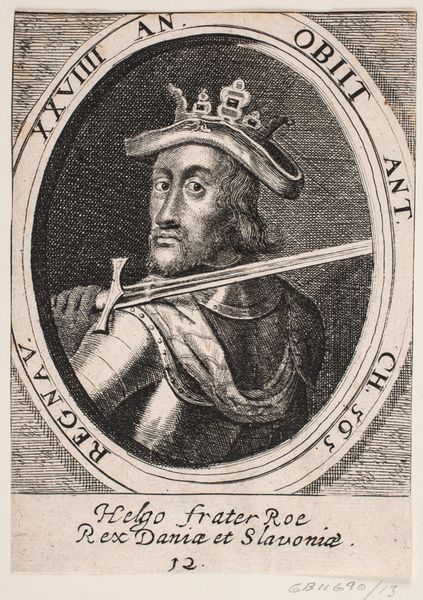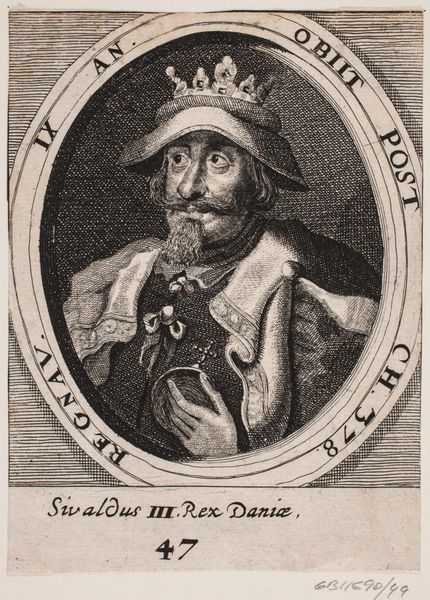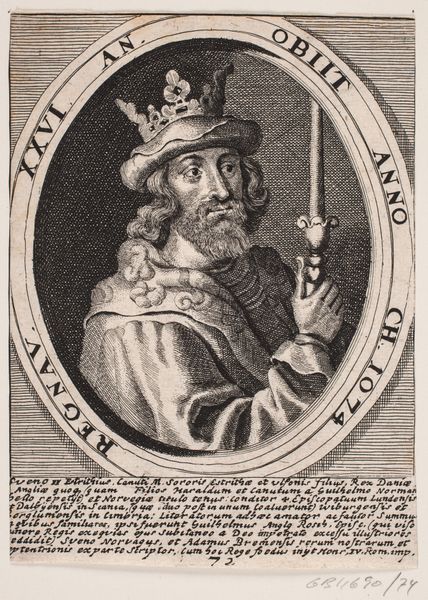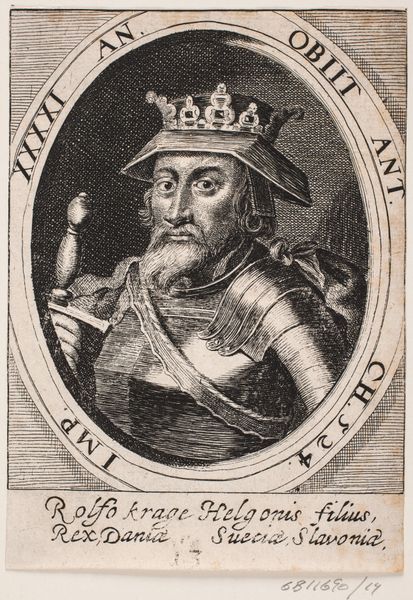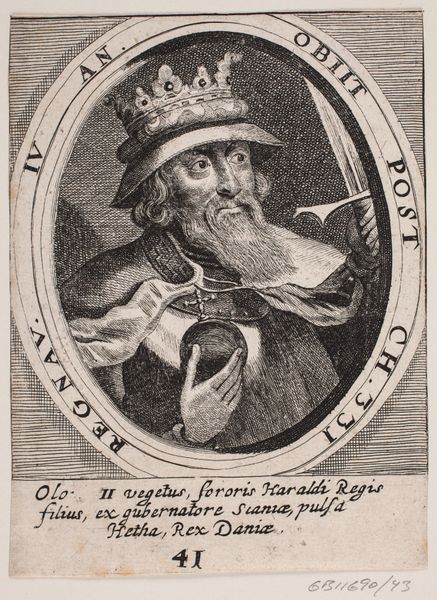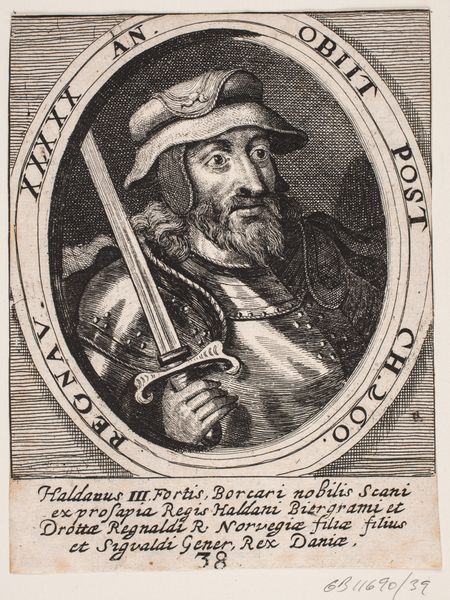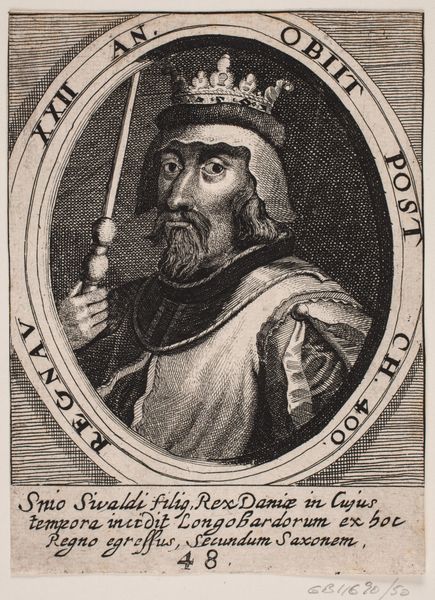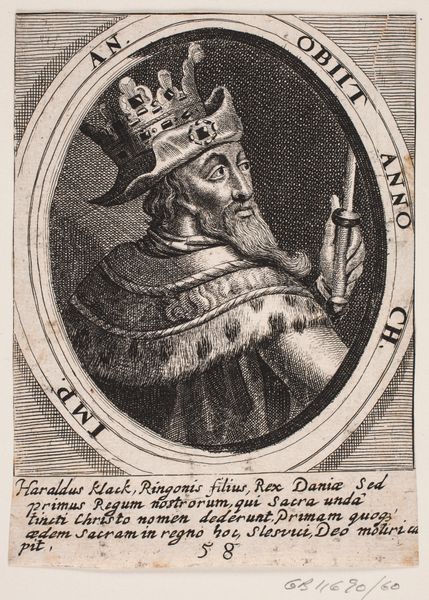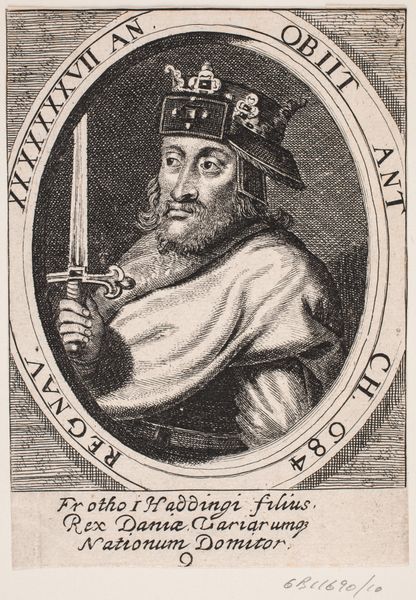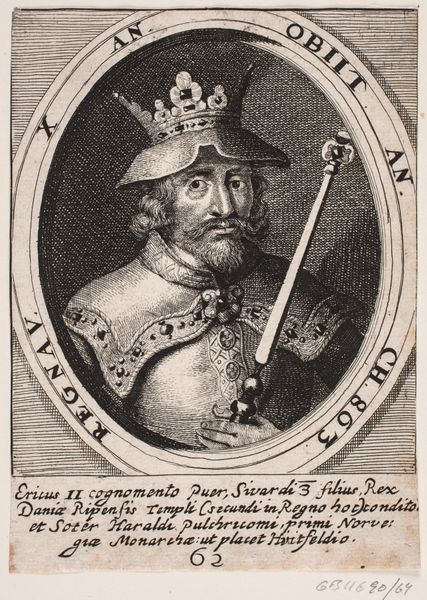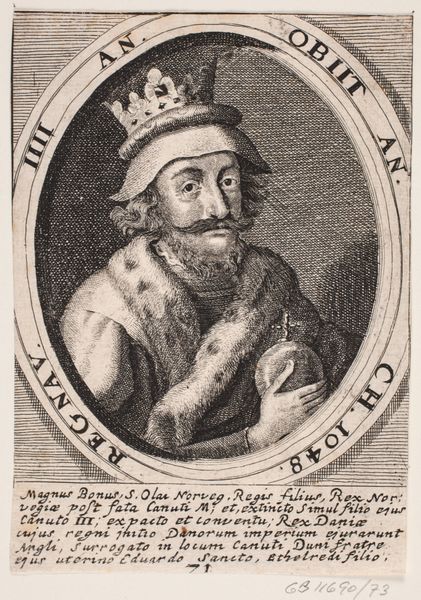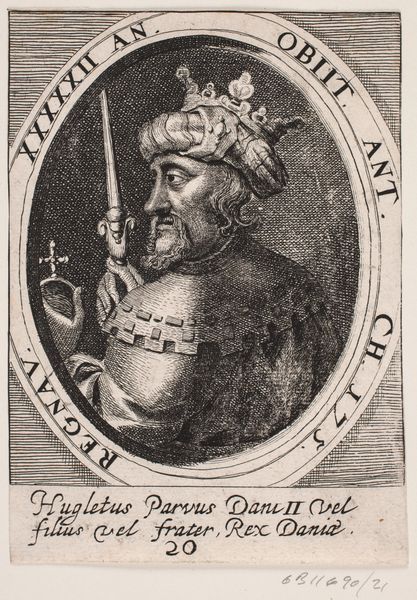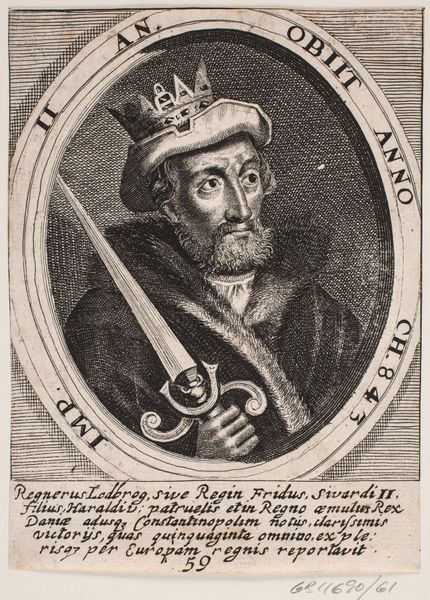
print, engraving
#
portrait
# print
#
caricature
#
figuration
#
history-painting
#
engraving
Dimensions: 140 mm (height) x 100 mm (width) (bladmaal)
Editor: So, here we have a print from 1646, "Kong Rørik." It's an engraving, depicting a royal figure holding a sword. I'm struck by how… stark it feels. What do you see in this piece, beyond just a historical portrait? Curator: What I find compelling is how this image participates in constructing a very specific, and potentially idealized, historical narrative. Consider the context: 1646. Europe is in the throes of the Thirty Years' War. The consolidation of power and the legitimization of rulers were key. This print presents Rørik not just as a king, but as a symbol of Danish identity, of a continuous and powerful lineage, wouldn't you agree? Editor: Definitely. It feels almost like propaganda. But isn't there a tension, too? I mean, the print almost looks like a caricature… Curator: Exactly! And that's the interesting friction. The print's potential "caricature" quality destabilizes the supposedly stable image of the monarchy. How does the artist simultaneously portray power and perhaps, subtly undermine it? We might want to consider the intended audience. Were they meant to blindly accept this image of authority, or to engage with it critically, even humorously? Who do you think could have been the consumer of this image? Editor: Well, the Latin inscription suggests a learned audience, maybe intellectuals or nobles? It's fascinating how an image can both uphold and question power. I had only looked at this work as a 'simple' historical document before. Curator: Precisely. It reminds us that visual culture is always engaged in a dialogue with its present, shaping and reshaping historical narratives. Considering how it situates power—by potentially upholding and subverting its representation simultaneously. This way of observing, and understanding visual rhetoric, encourages us to look deeper at art history.
Comments
No comments
Be the first to comment and join the conversation on the ultimate creative platform.
